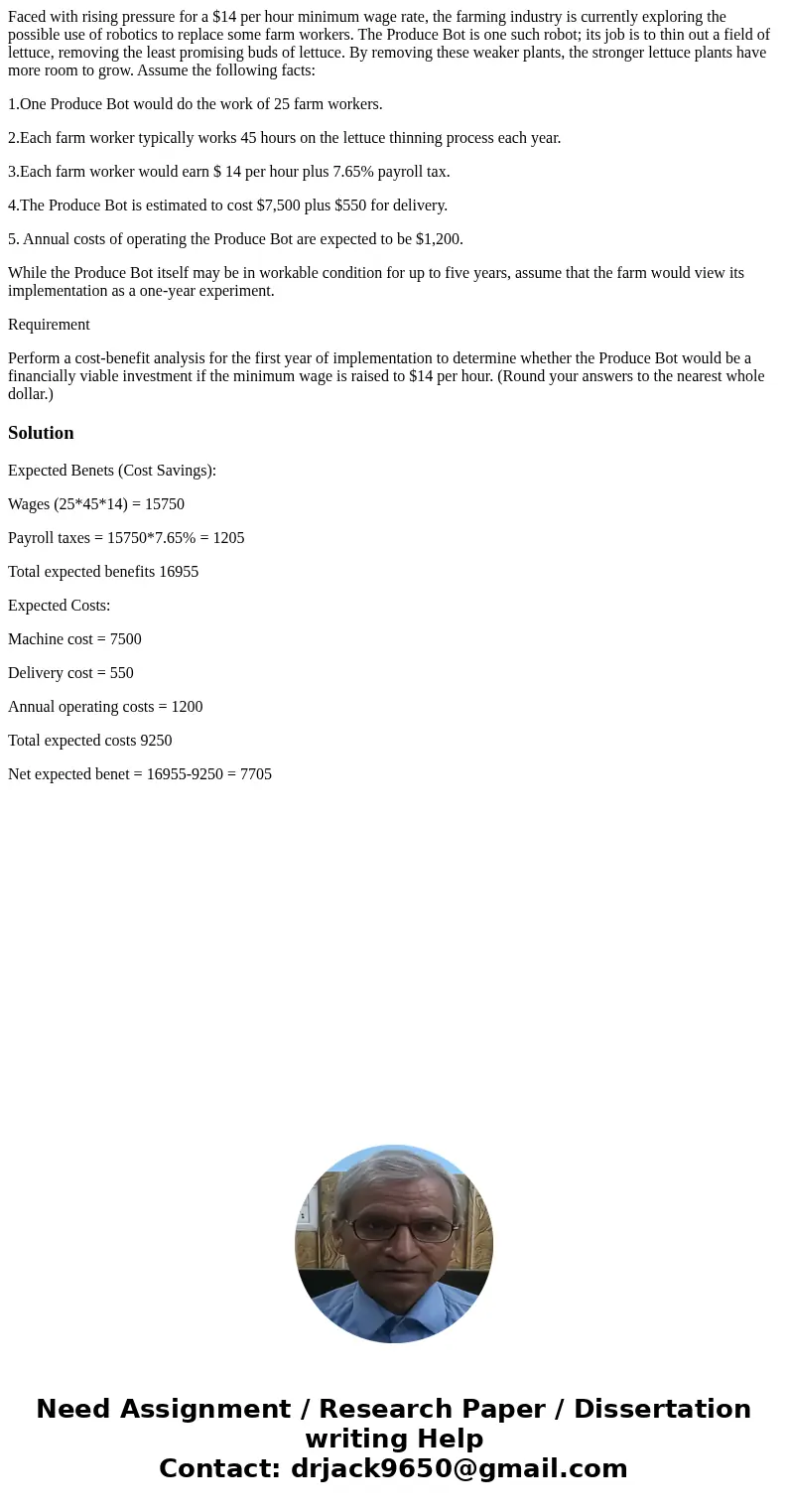Faced with rising pressure for a 14 per hour minimum wage ra
Faced with rising pressure for a $14 per hour minimum wage rate, the farming industry is currently exploring the possible use of robotics to replace some farm workers. The Produce Bot is one such robot; its job is to thin out a field of lettuce, removing the least promising buds of lettuce. By removing these weaker plants, the stronger lettuce plants have more room to grow. Assume the following facts:
1.One Produce Bot would do the work of 25 farm workers.
2.Each farm worker typically works 45 hours on the lettuce thinning process each year.
3.Each farm worker would earn $ 14 per hour plus 7.65% payroll tax.
4.The Produce Bot is estimated to cost $7,500 plus $550 for delivery.
5. Annual costs of operating the Produce Bot are expected to be $1,200.
While the Produce Bot itself may be in workable condition for up to five years, assume that the farm would view its implementation as a one-year experiment.
Requirement
Perform a cost-benefit analysis for the first year of implementation to determine whether the Produce Bot would be a financially viable investment if the minimum wage is raised to $14 per hour. (Round your answers to the nearest whole dollar.)
Solution
Expected Benets (Cost Savings):
Wages (25*45*14) = 15750
Payroll taxes = 15750*7.65% = 1205
Total expected benefits 16955
Expected Costs:
Machine cost = 7500
Delivery cost = 550
Annual operating costs = 1200
Total expected costs 9250
Net expected benet = 16955-9250 = 7705

 Homework Sourse
Homework Sourse